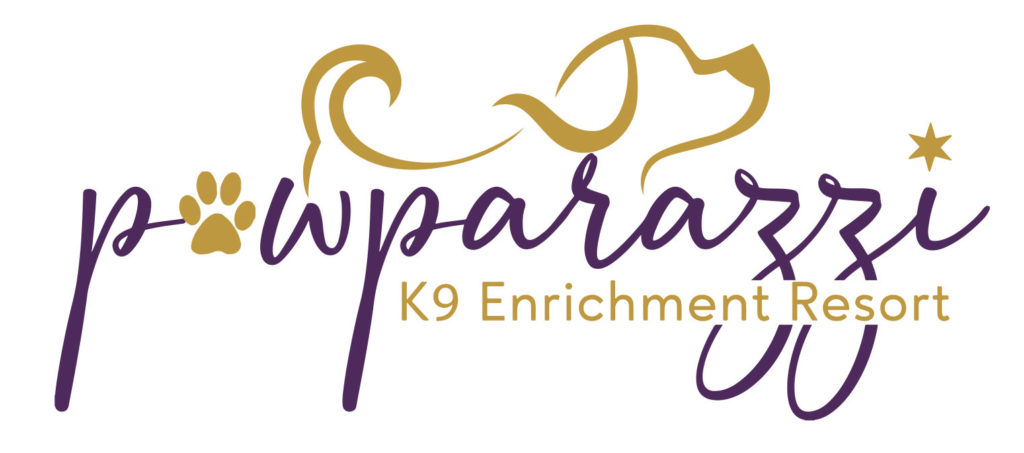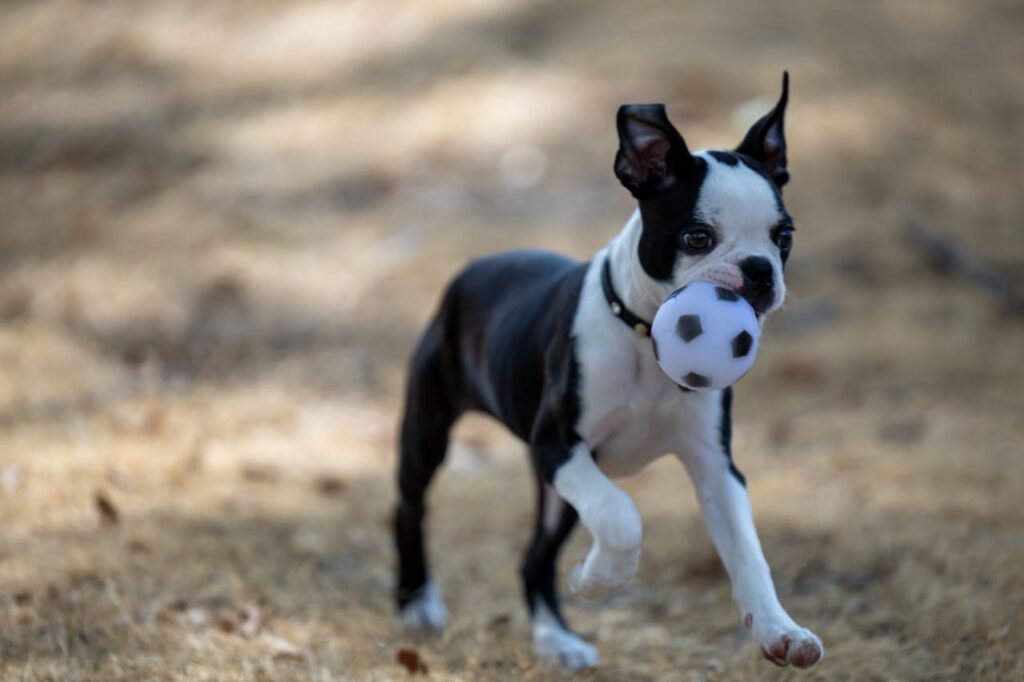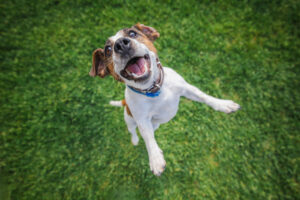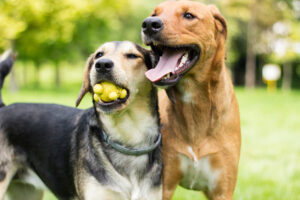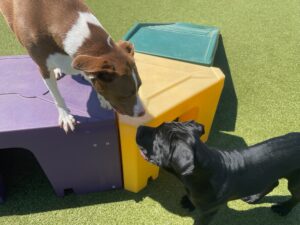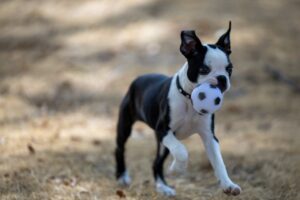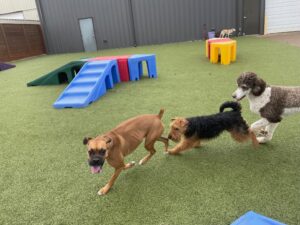The excited panting of a dog just before a walk is a universal sight among pet owners, yet many may not be aware of the profound impact regular exercise has on canine well-being. Beyond the wagging tails and playful antics, structured physical activity acts as a cornerstone for a dog’s health, boosting not only their physical but also psychological balance. Cognitive enhancement, reduced destructive behaviors, and longevity are a few of the treasures hidden behind those eager eyes begging for a stroll.
Historically, dogs, our loyal companions for millennia, have thrived in environments that stimulate their innate instincts and promote mobility. Research highlights that consistent exercise can decrease obesity rates in pets by up to 50%, echoing the same principles observed in human fitness paradigms. Implementing a thoughtfully tailored exercise regimen can significantly enhance a dog’s quality of life, mirroring the success stories of millions who have found transformed lives through structured physical activity.
Regular exercise for dogs offers significant benefits by boosting physical health, enhancing mental well-being, and strengthening the bond with their owners. It mitigates behavioral problems, increases life span, improves digestive health, and encourages socialization. Such activities ensure a balanced, enriched life for dogs.
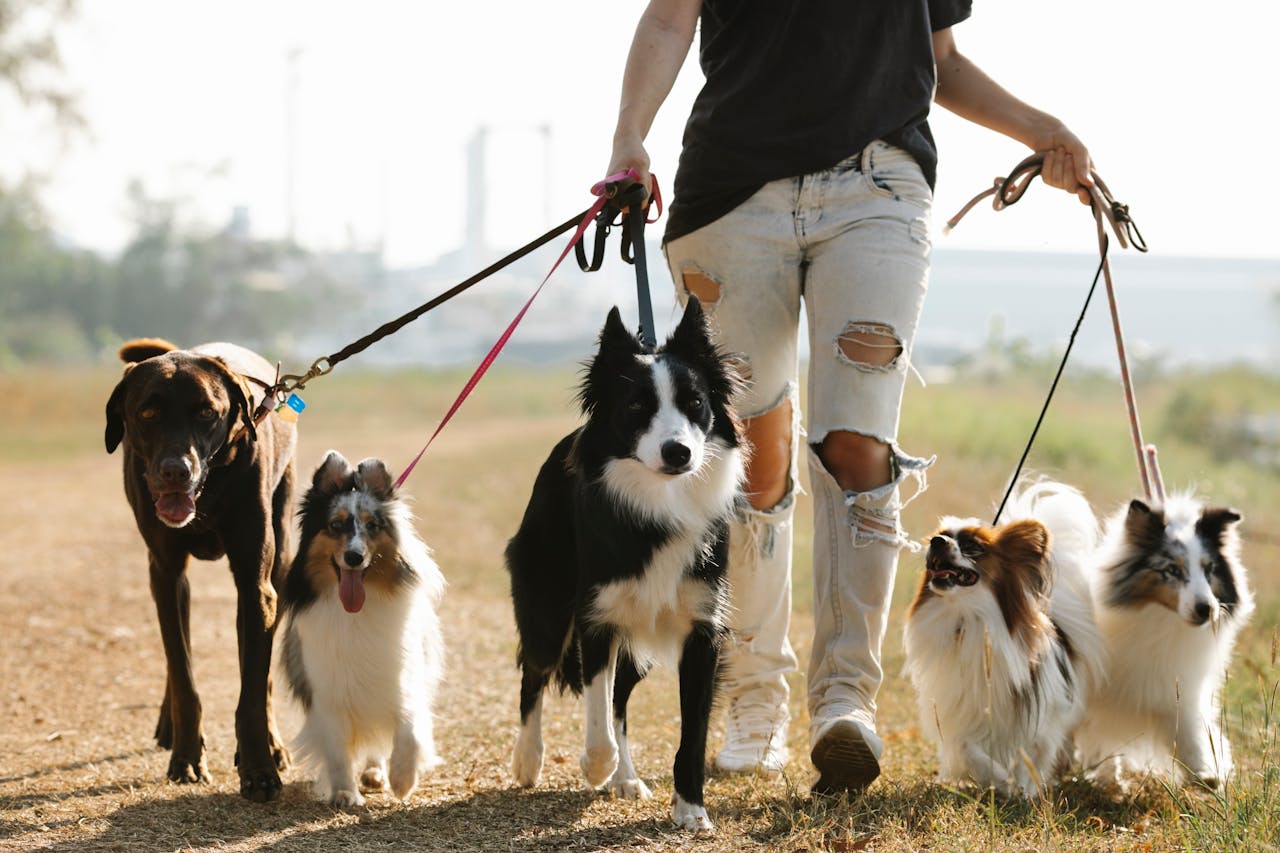
Exercise for Dogs: 7 Powerful Benefits for Health & Behavior
Exercise is like magic for dogs, transforming their health and happiness. Firstly, it helps them stay fit, reducing obesity and related diseases. Secondly, it sharpens their minds, decreasing stress and anxiety levels. Dogs who move more tend to behave better, with fewer destructive habits. In essence, regular activities make dogs happier and healthier.
Another great benefit of exercise is the stronger bond it creates between dogs and their owners. When you go for a jog or play fetch together, you’re spending quality time. This shared activity builds trust and understanding. The dog learns to rely on you, creating a more loving relationship. It’s a win-win for both canine and human.
There’s also a significant impact on a dog’s lifespan. Physical activity can add years to a dog’s life. It helps keep the heart healthy and joints flexible. Pets with regular exercise routines often visit the vet less. They’re energetic, joyful, and ready for more adventures with you.
Every dog breed has different exercise needs, making it important to tailor activities. For example, a Chihuahua may need less running compared to a Border Collie. Consider using a mix of walks, games, and training to keep your dog engaged. A simple activity schedule can vastly improve their quality of life. Here are some activities for different types of dogs:
| Breed Type | Recommended Activities |
|---|---|
| Toy Breeds | Short walks, fetch games |
| Working Breeds | Running, agility training |
| Herding Breeds | Hiking, herding exercises |
1. Promotes Physical Health
Exercise plays a crucial role in maintaining a dog’s physical well-being. Regular activity can help prevent obesity, which is a common issue among pets leading to diabetes, heart disease, and joint problems. Activities like running, swimming, and playing fetch keep their muscles strong and joints flexible. An active dog is less likely to suffer from bone issues like arthritis. These physical benefits extend the lifespans and overall health of our furry companions.
Healthy dogs are happy dogs, and exercise provides a natural way to expend excess energy. Dogs that don’t get enough physical activity might become bored and frustrated. This might lead to unwanted behaviors like chewing furniture or excessive barking. By engaging in regular exercise, dogs can channel their energy positively. A content pup is less likely to cause trouble around the house.
Exercise also boosts a dog’s metabolism and digestive health. Active dogs are less prone to digestive issues, as their bodies process food more efficiently. This leads to better nutrient absorption and overall digestive comfort. Regular movement ensures that essential bodily functions run smoothly. It’s easier to keep a dog at a healthy weight with an active lifestyle.
For owners looking to promote their dog’s physical health, incorporating various types of activities can be beneficial. Dogs love variety, and different exercises ensure all muscles are used. Here are some activities to try:
- Long walks or runs
- Frisbee or fetch games
- Swimming sessions
- Agility training courses
2. Enhances Mental Well-being
Exercise does wonders for a dog’s mental health too. When dogs engage in physical activities, their brains release feel-good chemicals, just like humans. These chemicals help reduce anxiety and stress, making dogs more relaxed and content. Regular activities also sharpen a dog’s problem-solving skills. Engaging in exercise is like a mental workout that keeps their brains active and alert.
Physical activity often involves challenges, which stimulates a dog’s mind. For instance, when playing fetch, they must track and retrieve the ball. Such games encourage strategic thinking and improve focus. This mental stimulation helps in preventing cognitive decline as dogs age. It’s like keeping their brain gears well-oiled and running smoothly.
For dogs that have behavioral issues, exercise can be a calming remedy. Physical activities act as outlets for pent-up energy, reducing aggressive or destructive behaviors. A well-exercised dog is less likely to be overly reactive or anxious. Owners often notice a more balanced mood in dogs with regular physical activity. It can lead to a more peaceful home environment.
Engaging your canine friend in interactive exercises can lead to better mental health. Consider these activities:
- Puzzle toys and games
- Hide and seek
- Obstacle courses
- Training sessions with new tricks
3. Strengthens the Human-Dog Bond
Exercise isn’t just about physical benefits; it also fortifies the bond between humans and their canine companions. Shared activities like walking, running, or playing fetch provide opportunities for quality time. This time together nurtures trust and understanding. When a dog relies on you for fun and exercise, their attachment naturally deepens. Your presence becomes a source of comfort and joy for them.
Regular exercise sessions serve as mutual engagement periods. Dogs look forward to these moments, creating a positive association with their owners. It’s not just about the physical activity but the emotional connection formed during these times. Training and interactive games strengthen communication and mutual respect. These moments of attention enrich the relationship, enhancing overall companionship.
Engaging in exercise with your dog also brings out their personality. Active play allows dogs to express themselves and share their joy. Observing their quirks and preferences during playtime helps you understand them better. This deepens empathy and emotional bonding. The laughter, excitement, and shared experiences create lasting memories.
Different activities can help strengthen this bond. Here are some ideas:
- Hiking in nature
- Attending agility classes together
- Playing tug-of-war
- Practicing new tricks and commands
All these activities involve active participation from both the dog and the owner, fostering a deeper connection. By investing this time, you’re not just exercising your pet but building a relationship based on mutual appreciation and trust. These shared moments will enhance both your lives, creating a fulfilling and joyful companionship.
4. Mitigates Behavioral Problems
Exercise is a powerful tool in curbing behavioral issues in dogs. Many times, undesirable behaviors stem from boredom or pent-up energy. Dogs that aren’t properly exercised may resort to digging, chewing, or excessive barking. Physical activity provides a constructive outlet for this energy. Keeping a dog active reduces the chances of these behaviors manifesting.
Structured playtime also offers mental stimulation, which is crucial for preventing destructive habits. Simple games like fetch or tug-of-war can exhaust a dog’s energy in a positive way. Activities engage their brains, keeping them alert and focused on the task. When dogs are mentally and physically tired, they’re less likely to engage in negative behaviors. Such activities lead to calmer and more content pets.
An exercise routine can help address specific behavioral problems. For instance, if a dog pulls on the leash out of excitement, regular walks and training can help teach proper walking etiquette. Similarly, interactive exercises can redirect a dog’s attention away from aggressive tendencies. Over time, exercise builds better patterns and reactions. This makes it easier for both pets and owners to enjoy a harmonious environment.
A variety of exercises can address different behavioral issues. Consider these options:
- Leash training during walks
- Interactive games for focus and attention
- Agility courses to challenge and engage the mind
- Regular play sessions to release excess energy
These initiatives require patience and consistency but ultimately lead to improved behavior. By channeling energy effectively, dogs learn to behave appropriately, reducing stress for both owner and pet. Engaging them in such activities fosters a balanced and relaxed mindset. This makes it easier for dogs to adapt and thrive in various environments.
5. Boosts Life Span
Regular exercise is essential for extending a dog’s life. Active dogs tend to maintain better weight, reducing the risk of obesity-related diseases. Cardio activities, like running or swimming, strengthen their heart and improve circulation. This enhances their overall health, decreasing visits to the vet. A healthy dog is more likely to enjoy a longer, happier life.
Exercise also improves a dog’s immune system, helping them fend off illnesses. Engaging in daily activities helps build resistance against common ailments. With a robust immune system, dogs recover quicker from minor health issues. They also face fewer health scares over the years. Consistent exercise keeps them in peak condition.
As dogs age, maintaining regular exercise becomes even more crucial. Older dogs benefit greatly from activities that keep their joints flexible. Exercise reduces stiffness, enabling them to enjoy their golden years actively. Maintaining physical activity helps combat age-related issues like arthritis. This leads to a more vibrant and lively old age.
Creating a balanced exercise routine catered to a dog’s specific needs can be beneficial. Here are some age-appropriate activities for dogs:
| Age Group | Recommended Activities |
|---|---|
| Puppies | Short play sessions, basic training |
| Adult Dogs | Walking, running, swimming |
| Senior Dogs | Gentle walks, stretching exercises |
Tailoring exercise to a dog’s age helps maximize health benefits. These activities, combined with proper care, contribute to a longer lifespan. Dogs thrive and can enjoy life’s adventures for many years with regular activity.
6. Improves Digestive Health
Exercise plays a key role in enhancing a dog’s digestive health. Physical activity aids in moving food through the digestive tract more efficiently. This helps prevent constipation and other gastrointestinal issues. Being active encourages regular bowel movements, reducing discomfort for pets. A well-functioning digestive system supports overall health.
Regular exercise can also help increase appetite in dogs. When dogs are active, their energy needs rise, prompting them to eat more balanced meals. This ensures they receive the necessary nutrients needed for growth and maintenance. Engaging exercises spark hunger, especially after an energetic play session. Eating well contributes to better nutrient absorption and enhanced vitality.
Moreover, staying active helps regulate metabolism in dogs. An optimal metabolic rate means efficient breakdown and use of food for energy. With a steady metabolism, dogs maintain healthy body weight effortlessly. Combined with a good diet, exercise prevents obesity-related digestive problems like bloating or gas. This makes it crucial for dogs to keep moving regularly.
A planned exercise routine tailored to dog’s age and dietary habits can be beneficial:
| Age Group | Diet Tips | Recommended Exercise |
|---|---|---|
| Puppies | Frequent small meals | Gentle playtimes |
| Adult Dogs | Nutrient-rich balanced diet | Diverse physical activities |
| Seniors | Easily digestible foods | Mild walks or swims |
This combination promotes better digestion across different life stages of a dog’s life cycle. Active routines paired with nutritious meals optimize their gut health effectively.
7. Encourages Socialization
Exercise is not just beneficial for a dog’s physical and mental health, it also plays a significant role in socialization. Regular activities like walks in the park or playing in dog-friendly areas allow dogs to interact with other animals and people. These interactions help dogs learn valuable social skills. Meeting different breeds, sizes, and temperaments makes them more adaptable and confident. Socialization through exercise reduces fear and aggression.
Participating in group activities fosters a sense of community among dogs. Activities such as agility classes, group walks, and doggy playdates provide structured social opportunities. These interactions can lead to lasting friendships between dogs. Being part of a group setting helps them learn boundaries and acceptable behaviors. Dogs that are well-socialized are generally happier and more relaxed.
Exercise routines that include social elements can also benefit the owners. Walking a dog in public spaces enables owners to meet fellow pet-lovers. This creates a shared community and support network. Watching dogs play together can be a joyful and rewarding experience for owners too. It strengthens the bond not only between dogs but also among humans.
Here are some ideas to encourage socialization through exercise:
- Visit a dog park
- Join a local dog walking group
- Enroll in obedience or agility classes
- Organize playdates with friends’ dogs
These activities help dogs develop good habits and behavior through positive interactions. Incorporating varied social exercises ensures that they are well-rounded and friendly. Socially active dogs lead a more balanced and enriching life. They get to enjoy the company of other dogs while staying healthy and fit.
The Importance of Regular Exercise in a Dog’s Daily Routine
Exercise is vital in a dog’s daily life, impacting their physical and emotional well-being. Regular activity helps maintain a healthy weight, reducing the risks of obesity and related diseases. It strengthens muscles, bones, and the cardiovascular system, keeping dogs fit and agile. Beyond physical benefits, exercise also plays a role in mental health, relieving stress and anxiety. Dogs that move regularly tend to have more balanced behavior and energy levels.
Integrating exercise into a daily routine also promotes better habits and discipline. Consistent activities help establish a routine, allowing dogs to know when it’s time to play and when to rest. This predictability provides a sense of security and reduces anxiety. Dogs thrive on routine and structure, just like humans. A scheduled time for exercise can improve their overall behavior.
Daily exercise provides ample opportunities for bonding with their owners. Walking, playing fetch, or running together strengthens their connection. This quality time fosters a deeper relationship rooted in trust and companionship. Dogs often look forward to these shared moments, associating them with happiness and fulfillment. The positive reinforcement from these activities benefits both the pet and the owner.
Here are simple ways to incorporate exercise into a dog’s daily schedule:
- Morning walks or jogs
- Evening play sessions in the backyard or park
- Interactive toys for indoor activity
- Weekend hikes or swimming trips
Incorporating a variety of exercises keeps routines exciting and enriching. This ensures well-rounded physical and mental stimulation. With regular engagement, dogs remain healthy and enriched. Prioritizing exercise in their daily routines leads to a happier, healthier life for dogs.
How Exercise Needs May Vary Across Different Dog Breeds
The exercise needs of dogs can differ greatly, depending largely on their breed. Some breeds, like Border Collies and Australian Shepherds, need lots of physical activity due to their high energy levels. They thrive on activities like running, agility training, or herding games. These dogs often require more than just a simple walk to stay content. Without enough exercise, they may develop behaviors like chewing or excessive barking.
On the other hand, smaller breeds such as Pugs and Bulldogs might need less intense activities. Their shorter noses can make breathing harder, so they benefit from moderate activities. Short, gentle walks or indoor play can suit their needs better. These breeds often enjoy relaxed environments with minimal exertion. Less intense exercise helps maintain their health without overstressing their bodies.
Age and health also influence exercise requirements. Puppies are full of energy and need different styles of play to develop muscles and social skills. As they mature, exercise routines can become more structured and challenging. For seniors, gentle activities like slow walking or swimming can help alleviate stiffness. This provides comfort while keeping them fit.
Here’s a simple breakdown of exercise recommendations for different breeds:
| Breed Type | Recommended Exercise |
|---|---|
| High-energy breeds | Running, agility, herding |
| Small breeds | Short walks, indoor play |
| Senior dogs | Gentle walks, swimming |
Understanding these needs helps ensure dogs get the right amount of exercise. Tailoring activities enhances their well-being and happiness. Each breed’s unique characteristics dictate their ideal routines. Adjusting these plans keeps dogs active, healthy, and fulfilled.
Seeking Professional Guidance for Dog Exercise Plans
Sometimes, it can be challenging to determine the best exercise plan for your dog. Consulting a professional, such as a veterinarian or a dog trainer, can provide valuable insight. They can assess your dog’s age, breed, and health to tailor a specific routine. Professionals have the knowledge to spot potential health issues and adjust exercise accordingly. This ensures that your dog is safe and benefiting from their activities.
Veterinarians can offer advice on how to avoid injuries, especially if your dog has existing conditions. They can recommend exercises that boost recovery and strength. For dogs with weight issues, a vet can develop a plan to help shed pounds gradually. They focus on balancing diet and exercise to promote overall well-being. Engaging with a vet regularly keeps your dog on a healthy track.
Dog trainers specialize in creating enjoyable and effective exercise routines. They can introduce new activities to keep your dog engaged and mentally stimulated. Trainers often have creative ideas to incorporate into daily routines. This variety prevents boredom and promotes consistent exercise habits. Their expertise ensures that both you and your dog have a positive experience.
Consider collaborating with professionals for tailored exercise plans:
- Get assessments from a vet about health-specific limitations
- Discuss behavior-based exercise ideas with a dog trainer
- Attend workshops or group classes for interactive guidance
These collaborations provide an informed approach to your dog’s fitness routine. Professional guidance complements your efforts at home. Investing time and resources into expert advice enhances the quality of life for your furry friend. It ensures they’re not only fit but also happy and safe.
The Role of a Balanced Diet in Complementing Exercise Regimes
A balanced diet is vital for dogs engaging in regular exercise. Proper nutrition provides the energy needed for physical activities. Proteins, carbohydrates, and healthy fats boost a dog’s stamina and performance. These nutrients support muscle growth and repair after a workout. Without a balanced diet, even the best exercise plan falls short.
Nutrients play specific roles in a dog’s health and fitness. Proteins are essential for muscle development and recovery. Carbohydrates fuel their active lifestyle, keeping them energetic and lively. Healthy fats are crucial for the absorption of vitamins and maintaining healthy skin and coat. Each nutrient contributes to overall well-being, especially for active dogs.
Feeding your pet with the right balance of nutrients helps in maintaining an ideal weight. A well-fed dog is less likely to suffer from obesity-related issues. It also ensures their energy levels are consistent throughout the day. This balance allows them to enjoy their exercise sessions fully. Exercise complements diet in managing a healthy weight for dogs.
Here are some suggestions for a balanced dog diet:
- High-quality protein sources like chicken, fish, or beef
- Whole grains for sustained energy
- Fruits and vegetables for vitamins and minerals
- Omega-3 and Omega-6 fatty acids for a shiny coat
Sticking to this dietary plan can enhance your dog’s exercise capabilities. Pairing a well-rounded diet with regular physical activity creates optimal health conditions. Monitoring food intake with an exercise routine guarantees a happy and healthy pet. Your dog will thrive, enjoying an active lifestyle with proper nutrition.

Frequently Asked Questions
Understanding the importance of exercise for dogs can lead to healthier and happier pets. Here are some common questions about how to best integrate exercise into your dog’s daily routine.
1. How much exercise does my dog need daily?
The amount of exercise your dog needs can vary based on their breed, age, and health. Generally, a healthy adult dog should get at least 30 to 60 minutes of exercise each day. Smaller breeds might need less, while high-energy breeds may need more.
Puppies and younger dogs often require shorter, more frequent bouts of playtime. Senior dogs still need exercise but at a gentler pace. Consulting with your veterinarian can provide specific guidelines for your dog’s needs.
2. What types of exercises are best for dogs?
The best exercises for dogs include walking, running, playing fetch, and swimming. These activities cater to their physical and mental needs. Incorporating variety keeps them engaged and mentally stimulated.
Some dogs also benefit from agility training and obedience exercises. These activities provide mental challenges and physical exercise. Always consider your dog’s preferences and physical limitations when choosing exercises.
3. Can exercise help with my dog’s behavioral issues?
Yes, exercise is often an effective way to address behavioral issues in dogs. Regular physical activity can reduce common problems like excessive barking, chewing, and digging. It provides an outlet for their energy and keeps them mentally stimulated.
Exercise can also reduce anxiety and stress in dogs, leading to a calmer and more balanced demeanor. Engaging in consistent routines helps reinforce positive behaviors and strengthens the bond between owner and pet.
4. Are there any precautions to take when exercising my dog?
Always consider your dog’s health and fitness level before starting a new exercise routine. It’s important to avoid overexertion, especially in hot weather. Ensure your dog stays hydrated and takes breaks as needed.
Puppies and senior dogs have different exercise needs. Avoid intense activities with young puppies to prevent joint issues. Similarly, older dogs may require gentler activities. Consulting your vet can provide tailored advice.
5. How can I incorporate exercise into my dog’s routine indoors?
Indoor exercises like playing fetch in a hallway, using puzzle toys, and practicing new tricks can keep your dog active. You can also set up an obstacle course with household items for added fun.
Interactive toys that dispense treats encourage both physical and mental stimulation. Combining these activities with short walks outside, when possible, keeps your dog engaged and healthy regardless of the weather.
Conclusion
Incorporating regular exercise into your dog’s routine offers transformative benefits for their health and behavior. It fosters a balanced lifestyle, enhancing physical fitness and mental health. Furthermore, exercise strengthens the bond between pets and their owners, creating a more fulfilling relationship. Prioritizing these activities ensures your dog’s well-being.
Understanding the specific needs of your dog’s breed, age, and health allows for tailored exercise plans. This approach not only optimizes physical benefits but also prevents potential problems. Consulting professionals can guide you in establishing an effective routine. By dedicating time to exercise, you pave the way for a happier, healthier life for your furry companion.
"*" indicates required fields
